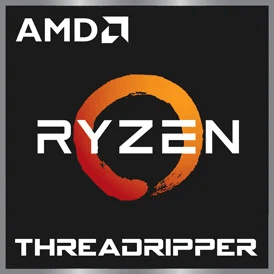Intel Core i5 9500F vs Intel Core i7 7700T
We compared two desktop CPUs: Intel Core i5 9500F with 6 cores 3.0GHz and Intel Core i7 7700T with 4 cores 2.9GHz . You will find out which processor performs better in benchmark tests, key specifications, power consumption and more.
Main Differences
Intel Core i5 9500F 's Advantages
Released 2 years and 3 months late
Higher specification of memory (2666 vs 2400)
Larger memory bandwidth (41.6GB/s vs 38.4GB/s)
Higher base frequency (3.0GHz vs 2.9GHz)
Larger L3 cache size (9MB vs 8MB)
Intel Core i7 7700T 's Advantages
Integrated graphics card
Lower TDP (35W vs 65W)
Score
Benchmark
Geekbench 6 Single Core
Intel Core i5 9500F
+38%
1481
Intel Core i7 7700T
1066
Geekbench 6 Multi Core
Intel Core i5 9500F
+76%
5695
Intel Core i7 7700T
3226
Blender
Intel Core i5 9500F
+30%
82
Intel Core i7 7700T
63
Geekbench 5 Single Core
Intel Core i5 9500F
+18%
1156
Intel Core i7 7700T
977
Geekbench 5 Multi Core
Intel Core i5 9500F
+45%
5243
Intel Core i7 7700T
3611
Passmark CPU Single Core
Intel Core i5 9500F
+22%
2622
Intel Core i7 7700T
2139
Passmark CPU Multi Core
Intel Core i5 9500F
+35%
10199
Intel Core i7 7700T
7511
General Parameters
Apr 2019
Release Date
Jan 2017
Intel
Manufacturer
Intel
Desktop
Type
Desktop
x86-64
Instruction Set
x86-64
Coffee Lake
Core Architecture
Kaby Lake
i5-9500F
Processor Number
i7-7700T
LGA-1151
Socket
LGA-1151
N/A
Integrated Graphics
HD Graphics 630
Package
14 nm
Manufacturing Process
14 nm
65 W
Power Consumption
35 W
100 °C
Peak Operating Temperature
80 °C
CPU Performance
6
Performance Cores
4
6
Performance Core Threads
8
3.0 GHz
Performance Core Base Frequency
2.9 GHz
4.4 GHz
Performance Core Turbo Frequency
3.8 GHz
6
Total Core Count
4
6
Total Thread Count
8
100 MHz
Bus Frequency
100 MHz
30x
Multiplier
29x
64 K per core
L1 Cache
64 K per core
256 K per core
L2 Cache
256 K per core
9 MB shared
L3 Cache
8 MB shared
No
Unlocked Multiplier
-
Memory Parameters
DDR4-2666
Memory Types
DDR4-2400, DDR3L-1600
128 GB
Max Memory Size
64 GB
2
Max Memory Channels
2
41.6 GB/s
Max Memory Bandwidth
38.4 GB/s
No
ECC Memory Support
No
Graphics Card Parameters
-
Integrated Graphics
true
-
GPU Base Frequency
350 MHz
-
GPU Max Dynamic Frequency
1150 MHz
-
Shader Units
192
-
Texture Units
24
-
Raster Operation Units
3
-
Execution Units
24
-
Power Consumption
15 W
-
Max Resolution
4096x2304 - 60 Hz
-
Graphics Performance
0.44 TFLOPS
Miscellaneous
3.0
PCIe Version
3.0
16
PCIe Lanes
16
SSE4.1, SSE4.2, AVX-2
Extended Instruction Set
SSE4.1, SSE4.2, AVX-2





